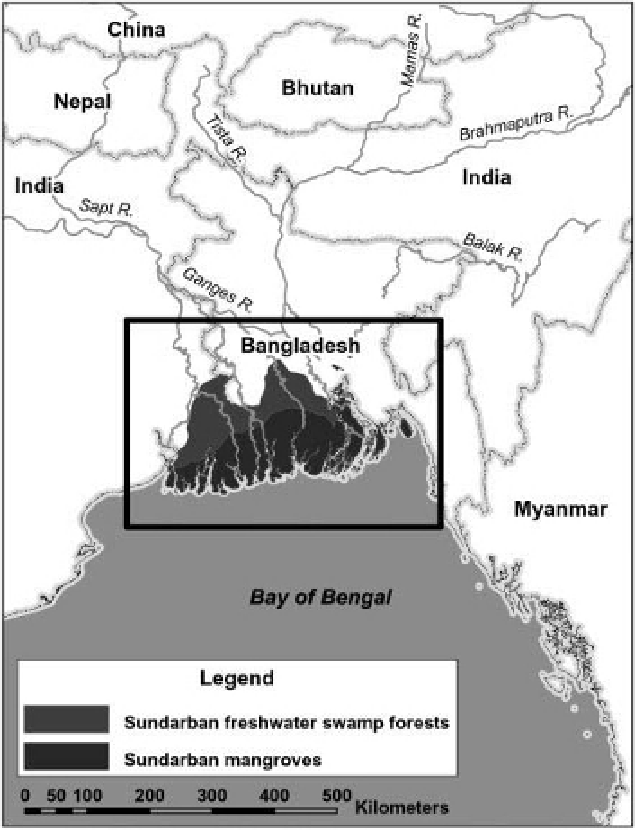Geoscience Reference
In-Depth Information
complicating issues of conservation and pro-
tection. Coordinated management efforts are
important to lasting protection. Yet, such
coordination is far from simple and requires
long-term commitments and recognition of the
importance of wetland conservation.
Keddy and Fraser (2005) argued that the size
of wetlands does matter. With increasing size,
wetland functions such as carbon sequestration,
nutrient cycling, l ood mitigation and habitat
availability operate at much larger scales
-
with
global and regional consequences. We i nd this
to be the case in each of these low-latitude
wetland sites. They are impressive not just for the
scale and scope of inl uence they have, but also
their ability to support a richness of life seldom
seen elsewhere and their capacity to recover
from natural and human-induced stressors.
15.2 Sundarbans of South Asia
The Sundarbans coastal mangrove ecosystem
stretches across roughly 10,000 km
2
of deltaic
plains formed by the Ganges, Brahmaputra, and
Meghna rivers as they enter the Bay of Bengal.
It is one of the largest contiguous stretches of
mangroves anywhere in the world (Fig. 15-1).
Figure 15-1.
Map of the Sundarbans wetland ecosystem of South Asia. Produced by A. Dailey. Map made with data
from Natural Earth, Global Administrative Areas, and World Wildlife Fund Terrestrial Ecoregions Database (Olson
et al. 2001). Accessed online
<
>
<
>
<
www.naturalearthdata.com
http://www.gadm.org/
and
http://
www.worldwildlife.org/science/data/item6373.html
>
February 2011.






